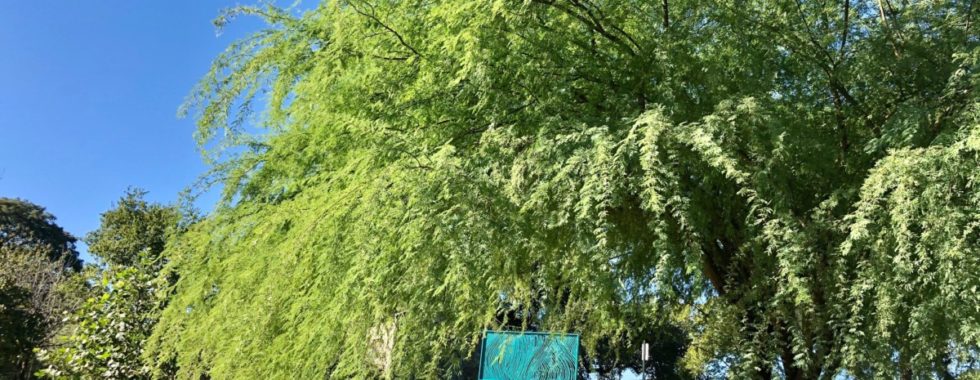For the Love of Trees: Huisache
Like many things that occurred in March 2020, I seemed to have missed this year’s explosion of yellow clustered puffs on the local Huisache trees. If you were lucky enough to notice, you know it is undoubtedly a sight to behold. Yet even in these first days of fall, the Huisache stands out with grace and beauty.
Huisache, Acacia farnesiana, is a fast-growing small tree in the legume family growing to no more than 6- 20 feet in height. Its yellow blossoms make it unmistakable in spring. In summer it is distinguished by the grey-green pairs of small sensitive leaflets with pairs of not to be missed thorns at the base of each leaf.
A friend to wildlife, its fruit feeds white-tailed deer, and javelina and quail doves enjoy its seeds and use it for nesting. The sweet-scented blossoms provide nectar for a wide variety of insects. Huisache can tolerate drought conditions, dry, rocky soil, nutritionally poor soil as well as damp soil.
My love for trees extends beyond their aesthetic benefits to what they offer medicinally, and the Huisache certainly enchants me. Although my expertise is with native European trees, I continue to deepen my understanding of the rich resources right here in Texas. The fact that Huisache thrives in both poorly drained soil and dry, rocky soil certainly has my attention. That leads me to believe it can adapt to different states in the body. The other feature I find fascinating is the thorns. Trees and shrubs known to protect and improve immunity are nearly always thorned. For example, one of the shrubs most known in Europe for supporting immunity is the Sea Buckthorn. Just try to get close to that plant without being pricked!
Researching the historical and medicinal uses, I found quite a bit.
The sweet blossoms were often used as a remedy for headaches.
A mouthwash for sore gums is made with an infusion of leaves, flowers, and stems. A tea made from the same parts of the plant is traditionally prescribed to reduce excess mucus or phlegm. Dried leaves can be applied directly to sores to improve healing. An infusion of the flowers has been used in the treatment of indigestion and anxiety and depression.
The seed pods are proven to contain antioxidant and topical anti-inflammatory agents. Extracts from the seed pods have been used to treat dysentery and tuberculous and are also effective in treating cholera. The green pods have been decocted and used to treat dysentery and inflammation of the skin and membranes. An infusion of the pod has been used to treat sore throats, diarrhea, leucorrhoea, and conjunctivitis.
The bark is astringent and known to relieve inflammation. Native Colombians use the bark in baths as a treatment for typhoid. The juice of the bark is used in Nepal to treat swellings. A decoction of the gum from the trunk has been used in the treatment of diarrhea.
The gummy roots have been chewed as a treatment for sore throat.
And just in case you are looking to cast a love spell, Huisache’s seed pods were considered an aphrodisiac by the indigenous peoples of Mexico.
Native to Texas and many states in North America, Huisache can be easily spotted out on the plains. Close to home, we can find some gorgeous examples on the trails along the San Marcos River and the Spring Lake trails.
Written by Lauren Hubele, a member of SMGA’s Outreach Committee. She is an author and educator whose practice provides a framework for resolving chronic and acute conditions using gemmotherapy, homeopathy, and a plant-based diet.


